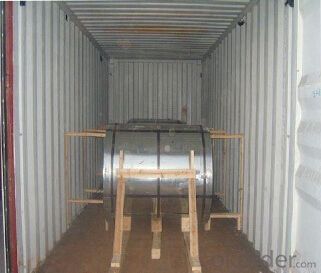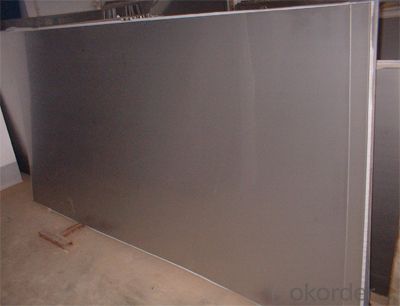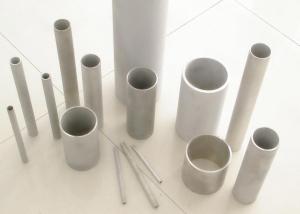Stainless Steel Plate 904L with No.4 Surface Treatment
- Loading Port:
- Shanghai
- Payment Terms:
- TT OR LC
- Min Order Qty:
- 500 m.t.
- Supply Capability:
- 5000000 m.t./month
OKorder Service Pledge
OKorder Financial Service
You Might Also Like
Hot sale stainless steel sheet 201/202/304/304l/310S/309S/316L/316Ti/316/316l/321,410/420/430/444/443/409L, and 904L.
Description of Stainless Steel Sheet:
Description | steel sheet,hot rolled steel sheet,cold rolled steel sheet, steel sheet,sheet,steel plate |
Standard | ASME, ASTM, EN ,BS,GB,DIN, JIS etc |
Application | Steel sheet applies to construction field, ships building industry, petroleum & chemical industries, war and electricity industries, food processing and medical industry, boiler heat exchanger, machinery and hardware fields. |
Packaging | Standard export sea-worthy packing |
Delivery time | 10-30 days |
Quality | No.1 |
Productivity | 500 tons/Day |
Note | Our company has cooperative relation between the domestic agents. Stainless steel sheet can be made accordingto the customers requirements. Fasten delivery. Quality assured. |
Contacts | If you have any question,please feel free contact me. |
Stainless steel sheet surface finish characteristics
Surface finish | Characteristics and application |
2B | The surface brightness and flatness of no2B is better than no2D. then through a special surface treatment to improve its mechanical properties,No2B could nearly satisfy comprehensive uses. |
No.1 | Polished with abrasive belt of grit#100-#200, have better brightness with discontinuous coarse stria, used as inner and external ornaments for building, electrical appliances and kitchen utensils etc. |
No.4 | Polished with abrasive belt of grit #150-#180,have better brightness with discontinuous coarse stria, but thinner than No3, are used as bathtub buildings inner and external ornaments electrical appliances kitchen utensils and food processing equipment etc. |
HL | Polished with abrasive belt of grit #150-#320 on the NO.4 finish and has continuous streaks, mainly used as buildings ornaments elevators, door of building, frontal plate etc. |
BA | Cold rolled, bright annealed and skin-passed, the product have excellent brightness and good reflexivity like mirror, kitchen apparatus, ornament etc. |
8K | The product have excellent brightness and prefer reflexivity can to be the mirror. |
Main Features of stainless steel sheet :
•Escalator, Elevator, Doors
•Furniture
•Production tools, Kitchen appliances, freezers, cold rooms
•Auto Parts
•Machinery and Packaging
•Equipment and Medical devices
•Transport system
Product Details:



Sandard Seaworth Packing(wooden packing with water proof paper)


FAQ:
1. What's the quality?
very fine
2. How long get reply?
within 24 hours
If you have any question about stainless steel sheets,donot forget to sending the email to Us! You will get the competitive Price and have a very good experience about the Buying Process! CNBM International Corporation is always your trustful friend!
- Q: Can stainless steel sheets be used for solar water heaters?
- Yes, stainless steel sheets can be used for solar water heaters. Stainless steel is a durable and corrosion-resistant material, making it suitable for withstanding the harsh conditions of solar water heating systems. It ensures longevity and reliable performance in capturing and transferring solar energy to heat water efficiently.
- Q: Are stainless steel sheets resistant to chlorine?
- Yes, stainless steel sheets are highly resistant to chlorine due to the passive film formed on their surface, which helps protect them from corrosion caused by chlorine exposure.
- Q: Are stainless steel sheets suitable for pharmaceutical cleanrooms?
- Yes, stainless steel sheets are highly suitable for pharmaceutical cleanrooms. Stainless steel is a preferred material in cleanroom environments due to its inherent qualities such as corrosion resistance, durability, and ease of cleaning. It is non-porous, making it resistant to bacteria, mold, and other contaminants. Additionally, stainless steel is able to withstand frequent sanitization procedures without deteriorating, making it a reliable choice for maintaining a clean and sterile environment in pharmaceutical cleanrooms.
- Q: What are stainless steel sheets used for?
- Stainless steel sheets are commonly used in various industries and applications, including construction, automotive, aerospace, food processing, and medical equipment manufacturing. They are primarily utilized for their exceptional resistance to corrosion, durability, and aesthetic appeal. Stainless steel sheets are employed in the production of architectural components, kitchen appliances, storage tanks, machinery parts, and decorative items, among others.
- Q: What are the different types of stainless steel sheet surface patterns for architectural purposes?
- There are several types of stainless steel sheet surface patterns commonly used for architectural purposes. Some of these patterns include brushed, mirror, embossed, bead blasted, and patterned. Each pattern offers a unique aesthetic appeal and can be chosen based on the specific requirements and design preferences of a project.
- Q: What is the thickness range for stainless steel sheets?
- The thickness of stainless steel sheets can differ based on the grade and application at hand. In general, stainless steel sheets come in thicknesses that span from 0.4mm to 6mm. Nonetheless, specific purposes may necessitate the use of thinner or thicker sheets. To ascertain the suitable thickness range for a particular project or application, it is crucial to seek advice from a supplier or consult industry standards.
- Q: Can stainless steel sheets be used in the medical industry?
- Stainless steel sheets have the capability of being utilized within the medical industry. This is because stainless steel is a favored material within the medical field due to its exceptional resistance against corrosion, its remarkable strength, and its ability to endure. It is commonly employed for a diverse array of purposes, encompassing medical instruments, surgical tools, dental equipment, implants, and medical machinery. Moreover, stainless steel sheets are uncomplicated to cleanse and sterilize, rendering them perfect for maintaining hygienic conditions within medical settings. Furthermore, stainless steel is biocompatible, signifying that it is harmonious with human tissues and does not elicit any unfavorable reactions, thereby making it a secure option for medical applications. All in all, stainless steel sheets are exceedingly appropriate for usage within the medical industry due to their myriad advantageous qualities.
- Q: What are the benefits of using laser-cut stainless steel sheets?
- The benefits of using laser-cut stainless steel sheets include precision and accuracy in cutting, clean and smooth edges, high-quality finish, versatility in design options, increased productivity and efficiency, and cost-effectiveness in the long run due to reduced material waste and minimal post-processing requirements.
- Q: What are the different types of stainless steel sheet finishes for industrial applications?
- There are several types of stainless steel sheet finishes for industrial applications, including 2B, No. 4, No. 8, BA, and brushed finishes.
- Q: What are the different types of textured patterns available for stainless steel sheets?
- There are several types of textured patterns available for stainless steel sheets, including diamond, quilted, linen, and checkerplate patterns.
Send your message to us
Stainless Steel Plate 904L with No.4 Surface Treatment
- Loading Port:
- Shanghai
- Payment Terms:
- TT OR LC
- Min Order Qty:
- 500 m.t.
- Supply Capability:
- 5000000 m.t./month
OKorder Service Pledge
OKorder Financial Service
Similar products
Hot products
Hot Searches
Related keywords


































